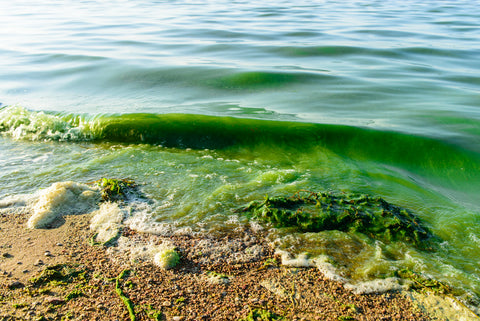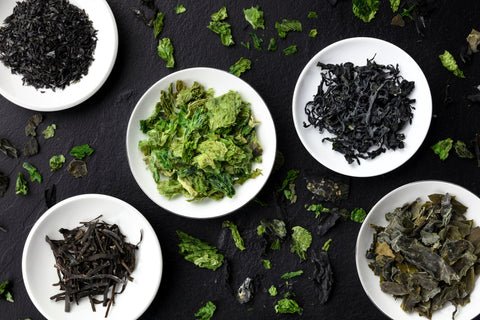10 Fascinating Facts About Algae You Might Not Know

Algae, often overlooked and misunderstood, are unsung heroes in our ecosystems. From pond life to nutritional supplements, these diverse organisms play crucial roles.
But, like all things in life, the little plants are complicated and can be both good and bad.
"Single-celled algae called phytoplankton are a main source of food for fish and other aquatic life, and account for half of the photosynthetic activity on Earth—that's good. But certain varieties such as some cyanobacteria produce toxins that can harm humans, fish, and other animals." (Source: NASA Science)
Let's dive into 10 intriguing facts that shed light on the fascinating world of algae.
Fact 1: Algae Powerhouses
Did you know that algae are not just pond nuisances? Some species, like spirulina and chlorella, are cultivated for various purposes, including nutritional supplements and even biofuels. These tiny powerhouses are packed with nutrients and have the potential to address global challenges.

Fact 2: Algae's Balancing Act
Algae contribute to the delicate balance of pond ecosystems. Through photosynthesis, they release oxygen during the day, supporting the well-being of fish and other aquatic life.
Fact 3: Algae Blooms and Challenges
While algae are essential, their overabundance can lead to algae blooms, a phenomenon fueled by excess nutrients. These blooms can harm aquatic life, reduce oxygen levels, and pose challenges to water quality. It's a reminder of the importance of maintaining a balanced environment.
Not sure what an algae bloom looks like?
Algae blooms can exhibit different appearances depending on the types of algae involved and environmental conditions. However, some general characteristics of algae blooms include:
- Color Change: The water may change color, often appearing green, blue-green, brown, or red, depending on the dominant types of algae present. The color change is due to the pigments in the algae.
- Surface Scum: Some algae blooms form dense surface scums or mats that can look like paint or scum on the water's surface. This can impede light penetration and oxygen exchange in the water.
- Foam: Blooms may result in the production of foam or froth on the water's surface. This is particularly common in certain types of algae, such as cyanobacteria (blue-green algae).
- Odor: In some cases, algae blooms can produce unpleasant odors, often described as musty or earthy. This odor is associated with the release of certain compounds by the algae.
- Fish Kills: Severe algae blooms can lead to low oxygen levels in the water as the algae die and decompose. This can result in fish kills, as fish and other aquatic organisms may be unable to survive in the oxygen-depleted environment.

It's important to note that not all algae blooms are harmful, but certain types of algae can produce toxins that pose risks to human and animal health. Harmful Algal Blooms (HABs) are a concern in many bodies of water, and monitoring their presence and potential impacts is crucial for environmental management.
Fact 4: Algae as Bioindicators
Consider algae as nature's water quality detectives. Certain algae species act as bioindicators, signaling the health of a water body. Their presence or absence can provide insights into nutrient levels and overall pond well-being.
Fact 5: Algae's Oxygenating Role
Beyond aesthetics, pond algae contribute significantly to oxygen levels. Through photosynthesis, they produce oxygen during daylight hours, benefiting not only fish but the entire pond ecosystem.
Fact 6: Algae on Your Plate
Believe it or not, algae are on the menu for many aquatic organisms. Fish and invertebrates rely on algae as a primary food source. Furthermore, algae cultivation is integral to aquaculture, providing nutrient-rich feed for farmed species.
Plus, certain types of algae are a "superfood" for humans, "because of their high content of protein, essential fatty acids, minerals, and vitamins" and being a rich source of B vitamins, vitamin K, iron, magnesium, calcium, iodine and more" (Source: Medical News Today).
According to an article in Medical News Today, "Researchers are now looking for different ways of growing nutritious foods to replace the ones whose cultivation is no longer as sustainable. One of these is algae." (Source: Medical News Today)

Fact 7: Seasonal Algae Dynamics
Algae growth is influenced by seasonal changes. Warmer temperatures and increased sunlight generally promote growth, while colder periods may slow it down. Understanding these dynamics helps in managing pond ecosystems effectively.
Fact 8: Algae's Water Filtration Role
Nature's water filter – that's what algae are. They absorb nutrients like nitrogen and phosphorus, playing a crucial role in maintaining water clarity and preventing the proliferation of harmful bacteria.
Fact 9: Beneficial Algae in Agriculture
Algae-based solutions are making waves in agriculture. Some algae varieties contribute to sustainable farming practices, offering natural alternatives for fertilizers and soil conditioners.

At Earth Smart Solutions we use seaweed, a type of algae, in many of our product formulations. Learn more in our blog, "Natural Ingredients: Seaweed Kelp".
Algae are simple, photosynthetic organisms that can be found in various aquatic environments. Seaweed is a larger, multicellular form of algae that typically grows in marine or freshwater environments. While all seaweeds are algae, not all algae are seaweeds. Algae include a diverse range of organisms, including microscopic phytoplankton and other simple forms, whereas seaweeds are macroscopic and can be quite large, resembling plants.
Fact 10: Algae and Environmental Innovation
The world of algae holds promise for environmental innovation. From wastewater treatment to carbon capture, researchers are exploring algae's potential to address pressing environmental challenges.
“Algae [have] chelating benefits, meaning the algae's minerals can bind to metal ions and pull them out of the water, which could clean wastewater and runoff. [They] can be beneficial in cleaning water, promoting sustainability and protection in aquaculture systems, and increasing resources for agricultural practices.” (Source: Medical News Today)
There you have it, the good and the bad on algae.
Sources:
Medical News Today, Best food forward: Are algae the future of sustainable nutrition?
New York State, Department of Health, Harmful Blue-Green Algae: Frequently Asked Questions
NASA Science, The Good, the Bad, and the Algae




Leave a comment